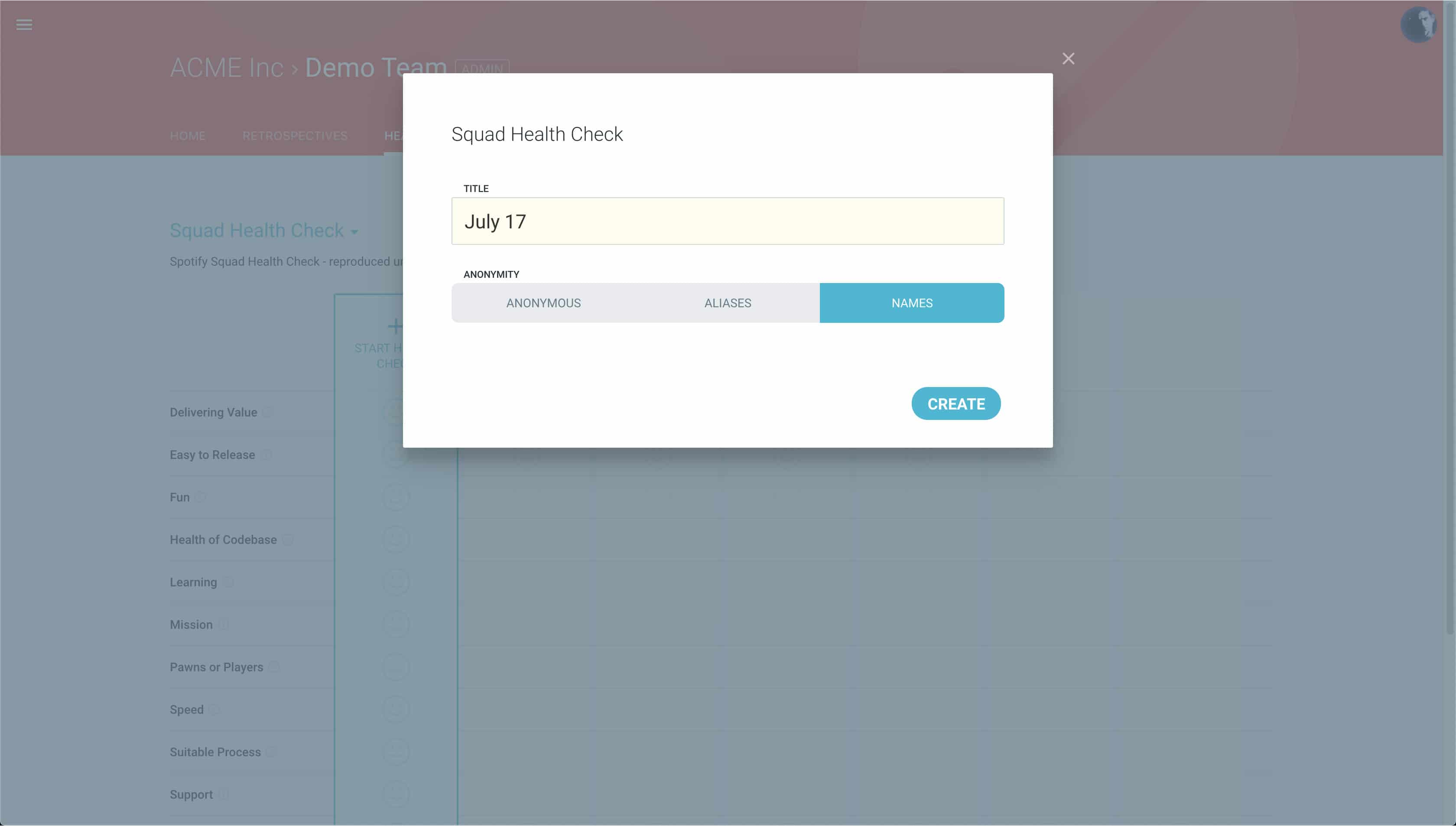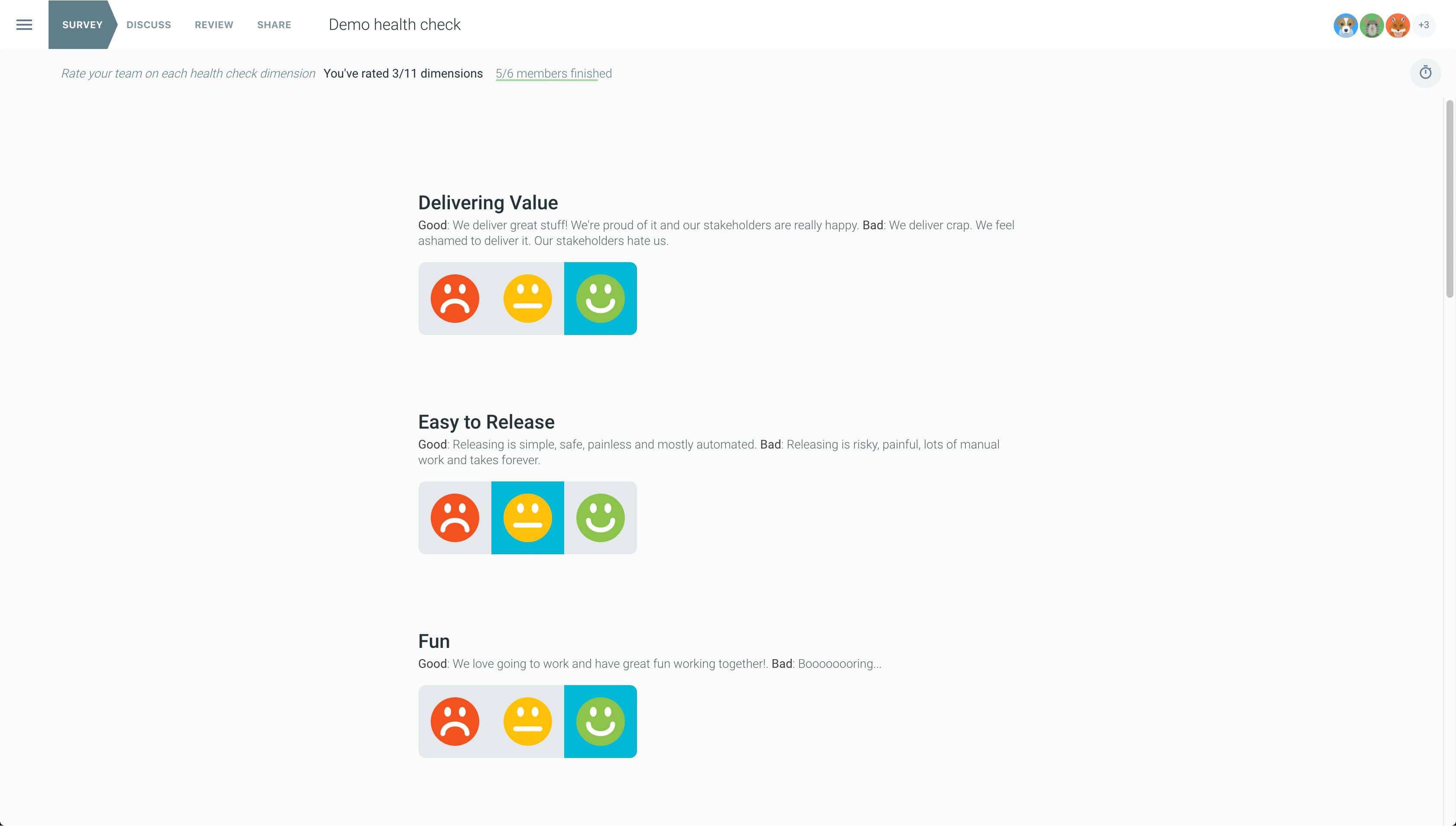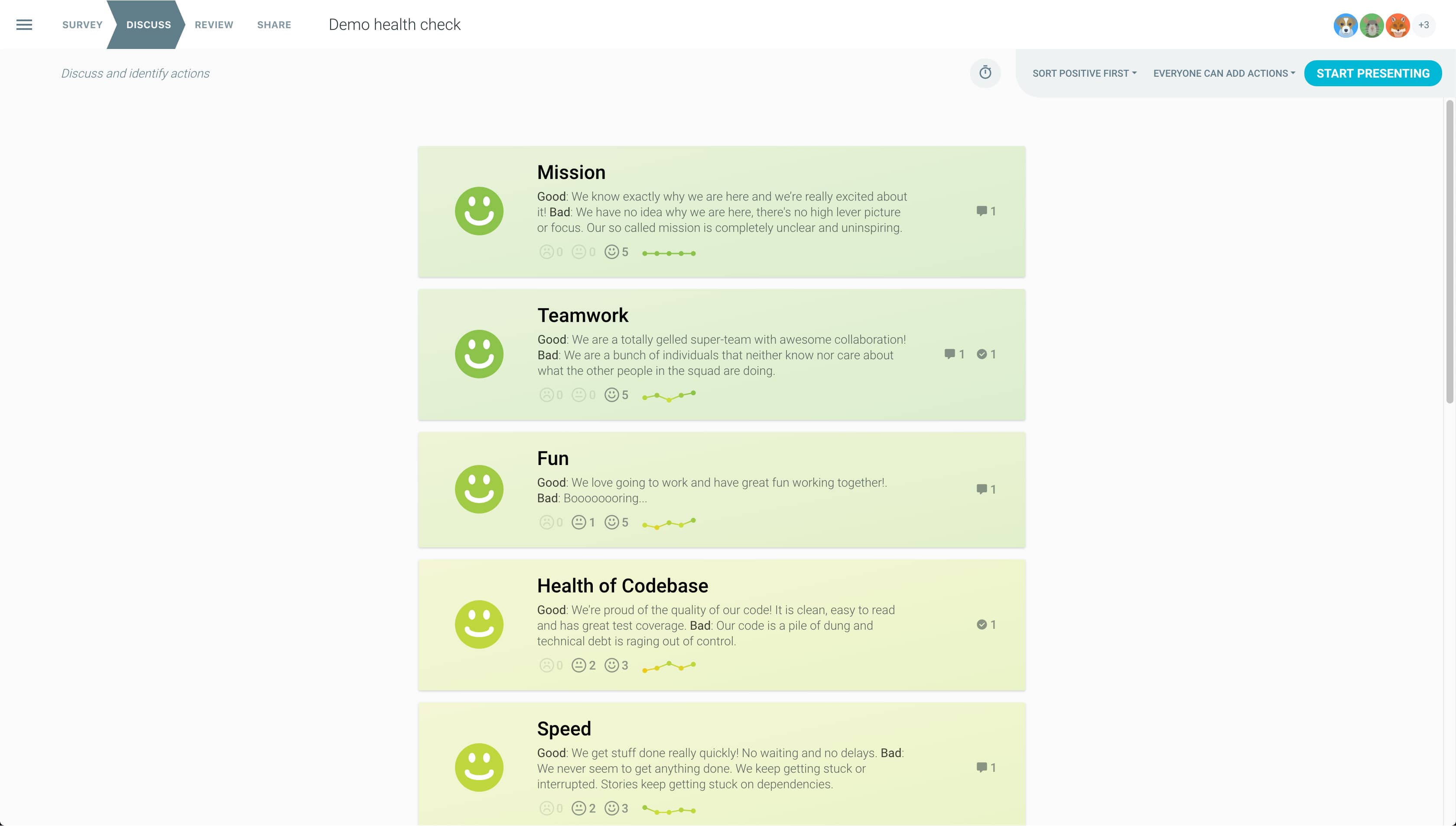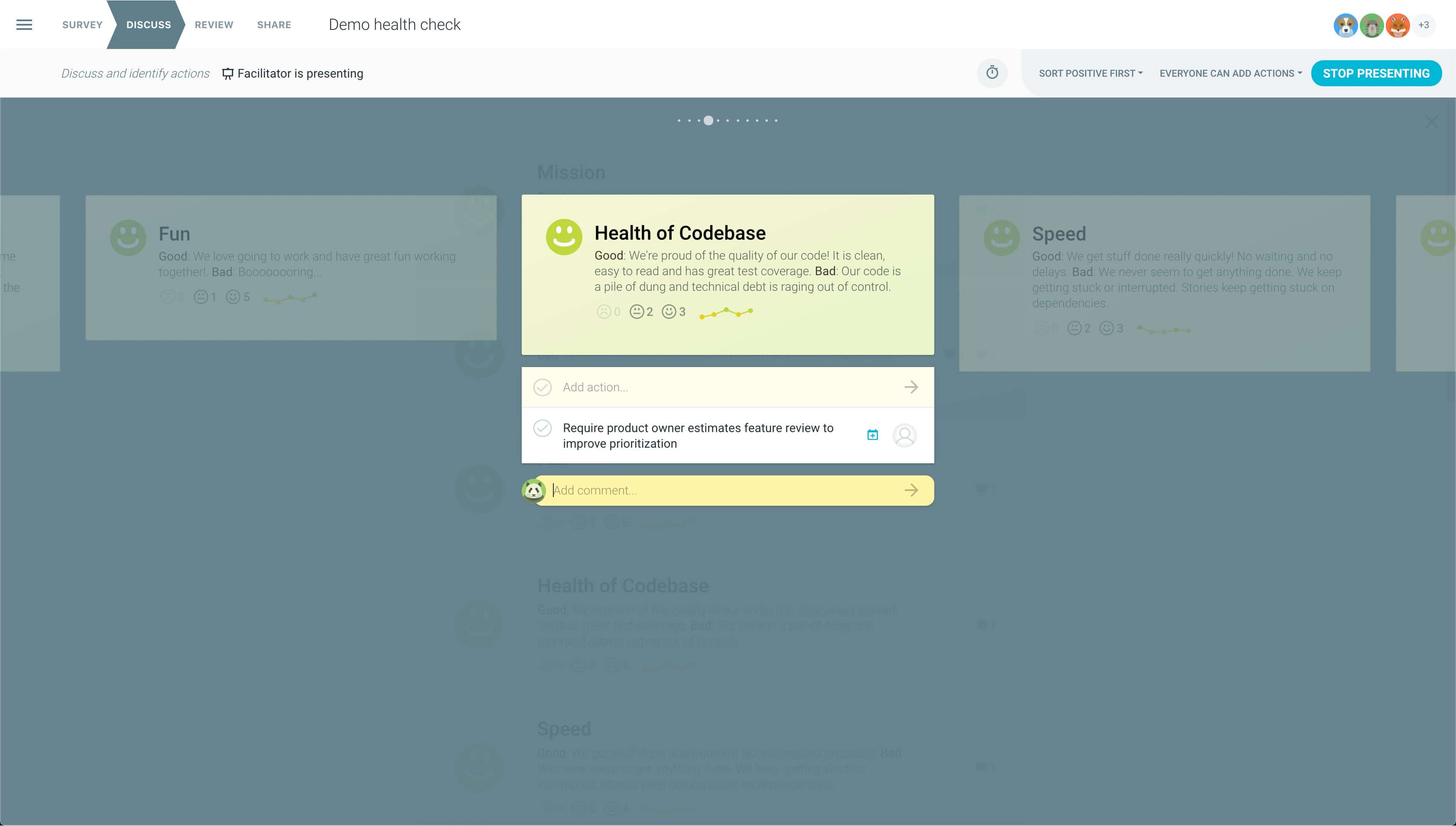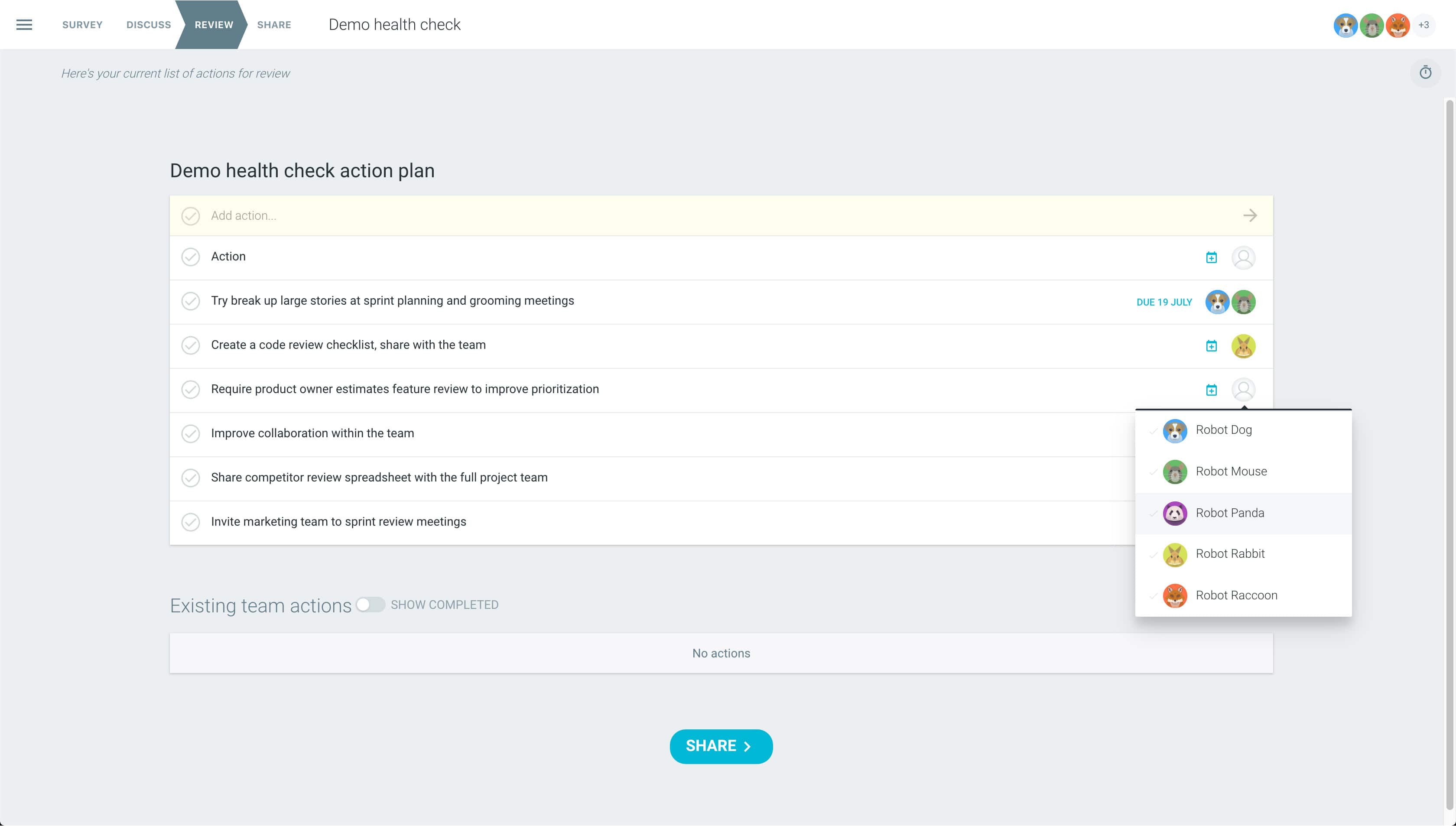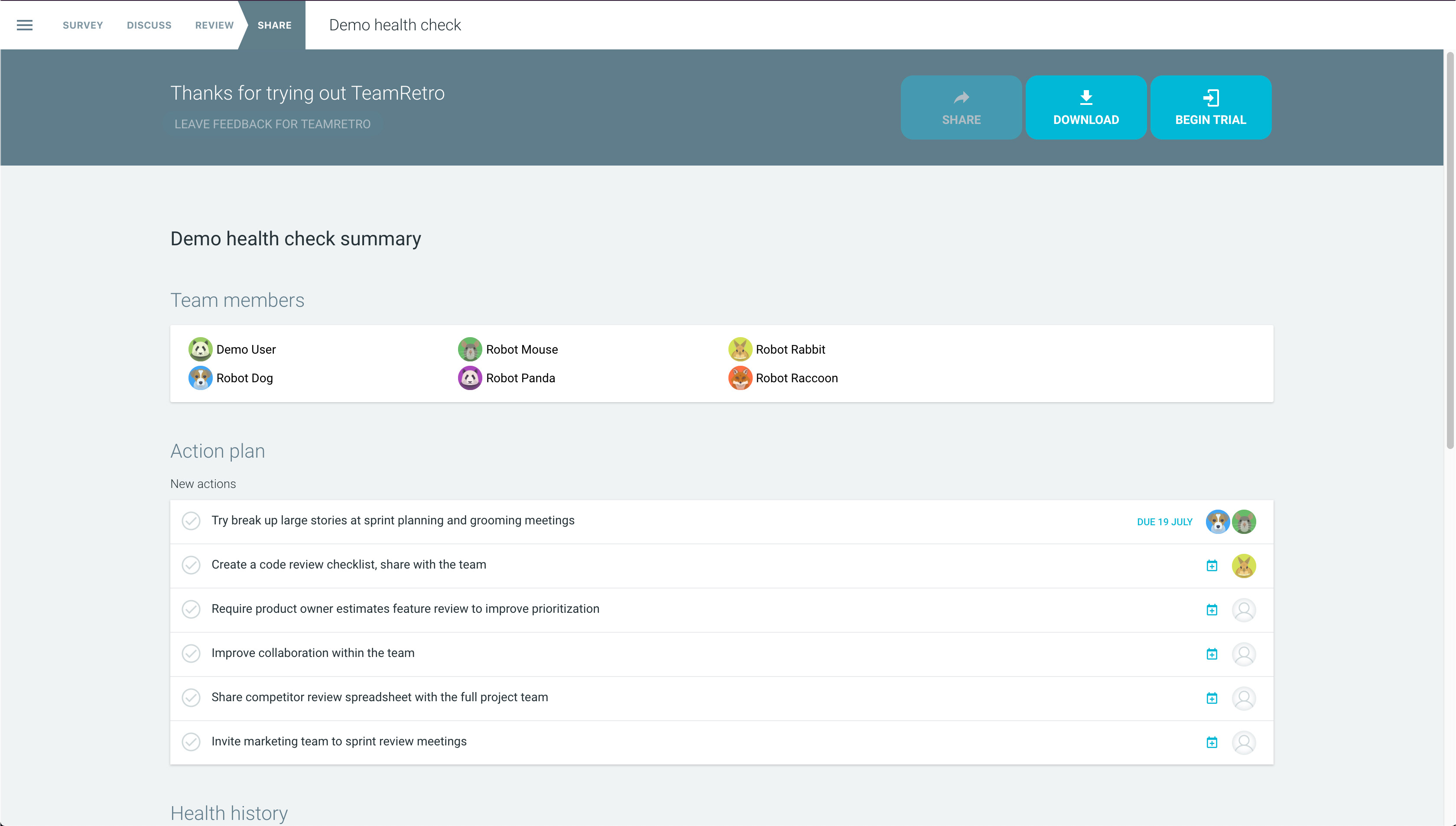Having a remote team creates a unique set of challenges when it comes to understanding how each team member is feeling and their current state of mind. Running a Remote Team Happiness health check gives everyone in the team to share their response around key factors that impact distributed teams.
Investing time in finding out how everyone feels is a strong signal about creating the right culture and discussing ways to improve communication, trust and collaboration in the team based on real data. Regular check ins for remote teams are even more important when you can’t meet face to face, giving people the opportunity to express their thoughts without the fear of losing their jobs. This can boost morale, lower stress and improve productivity.
TeamRetro provides a tool that lets each member in your remote team indicate their response to health dimensions, then instantly visualises the responses to produce an overall indicator of where your team is most and least happy.

Remote Team Happiness Health Dimensions
Right out of the box, TeamRetro asks each member in your team to respond to a set of dimensions that impact the happiness, effectiveness and productivity of remote workers. Want to measure something else? Change, add or remove dimensions and descriptions that reflect your team.
How to create a Health Check in TeamRetro
Your template is ready to go
Under Health Checks, select the health check you’d like to complete. Decide if you want to survey the team anonymously, using aliases or openly.
Reveal and discuss the results
Your health check data is displayed showing the average response and tally of each response. Sort dimensions by most positive, negative or mixed responses to make discussions more meaningful.
Keep conversation on track with Presentation Mode
Switch to presentation mode to sync devices making it easier to facilitate and focus conversations. Capture comments and actions along the way.
Review your action plan
Assign action owners and set due dates for new items and review prior actions. This action list can be tracked, shared or integrated into your other workflow tools.
Share the results
Great work, you are all done! Share the results with your team via email, download and print or publish to tools like Jira, Asana and Trello. Results can be tracked in your dashboard.
How important is remote team happiness?
- With the Future of Work and State of Remote Work showing the prevalence and significant presence of remote and distributed teams, it means scrum masters, leaders and managers need to be conscious of how to integrate and include remote workers into the team.
- Research validates our assumptions that happy workers are more productive. In a study by iOpener with 3,000 respondents in 79 countries showed that the happiest employers are 50% more productivity and 108% more engaged.
- Given that you can manage what you measure, knowing happiness levels can lead to improvements in company and team culture.
- Regular, consistent and authentic engagement with staff to learn, listen and take action on what has been shared by teams can shift the needle in terms of creating greater engagement and overall team happiness.
- It’s about progression, not perfection!

 Good: I have the freedom, flexibility and capacity to do the job.
Good: I have the freedom, flexibility and capacity to do the job. Good: The work I do has meaning and is driving us closer to the goal.
Good: The work I do has meaning and is driving us closer to the goal.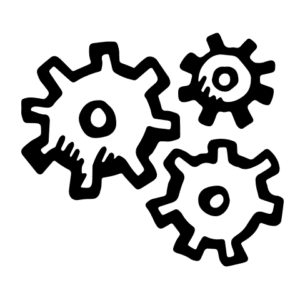 Good: I am able to deliver outcomes effectively and efficiently with the right amount of time and resources.
Good: I am able to deliver outcomes effectively and efficiently with the right amount of time and resources. Good: I feel strongly supported by people, processes, tools and resources in doing my job.
Good: I feel strongly supported by people, processes, tools and resources in doing my job. Good: I am engaged and feel connected to the team and the organization at large.
Good: I am engaged and feel connected to the team and the organization at large. Good: There are high levels of trust and psychological safety in our team transactions.
Good: There are high levels of trust and psychological safety in our team transactions. Good: I have routines that create positive mental and physical health.
Good: I have routines that create positive mental and physical health.